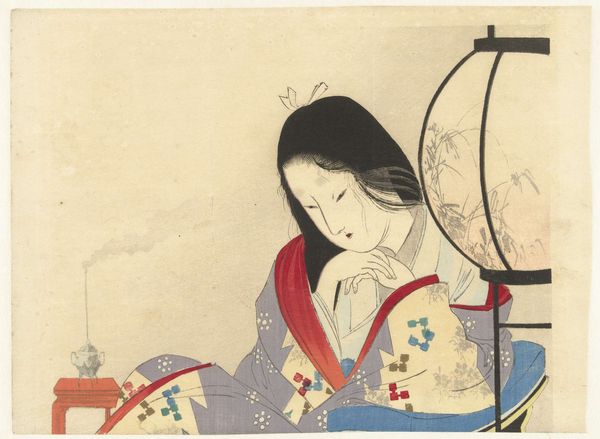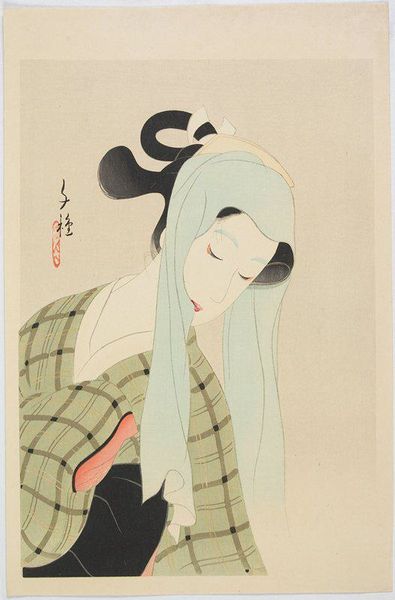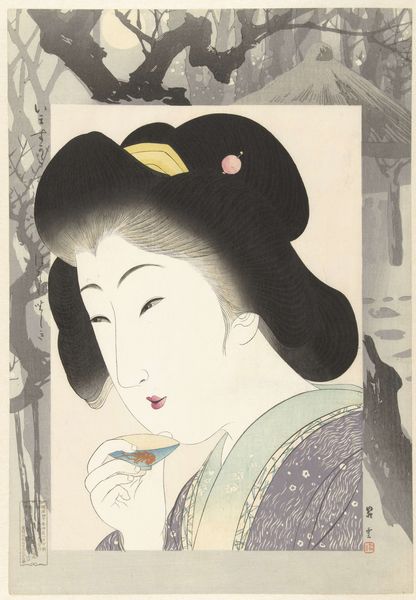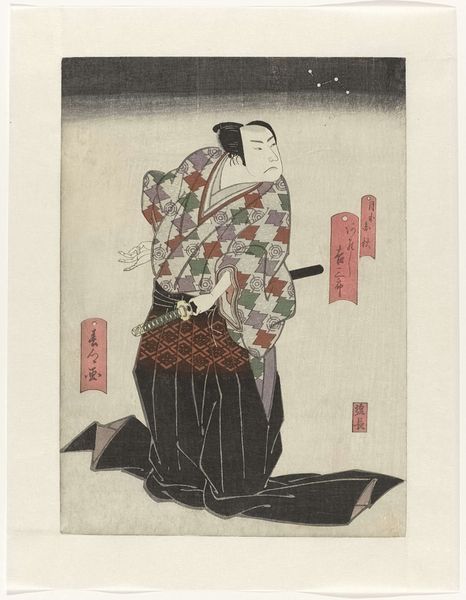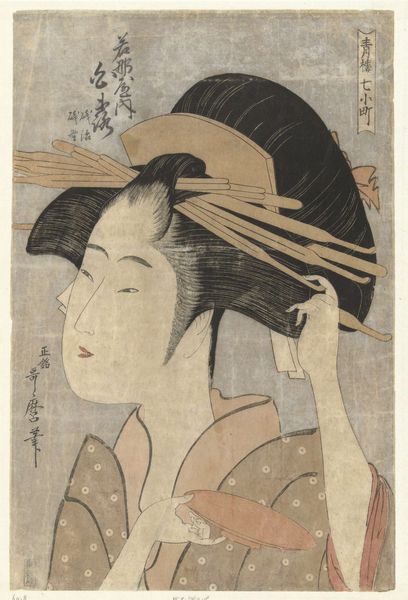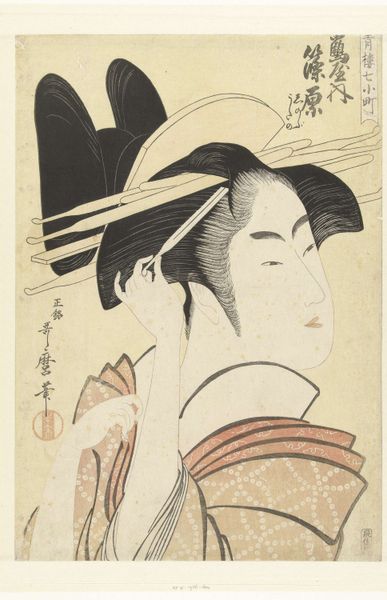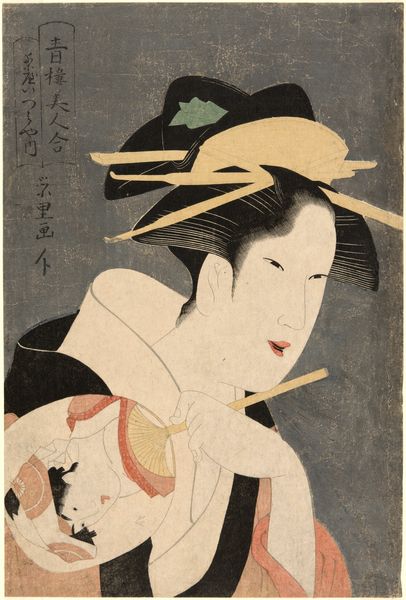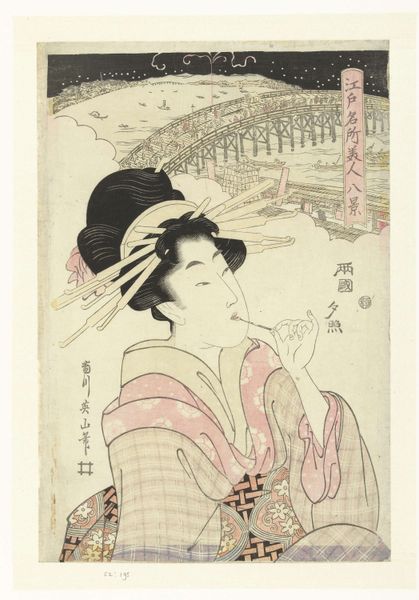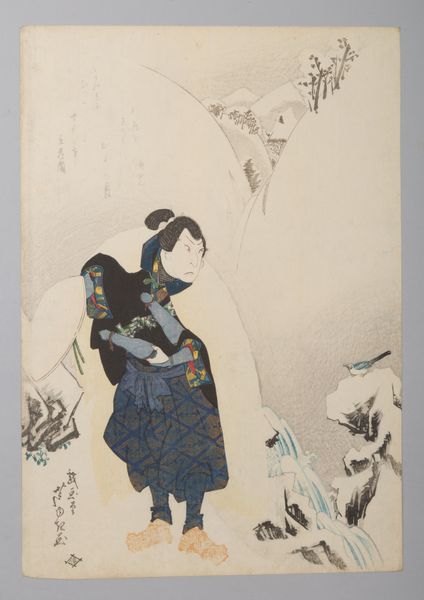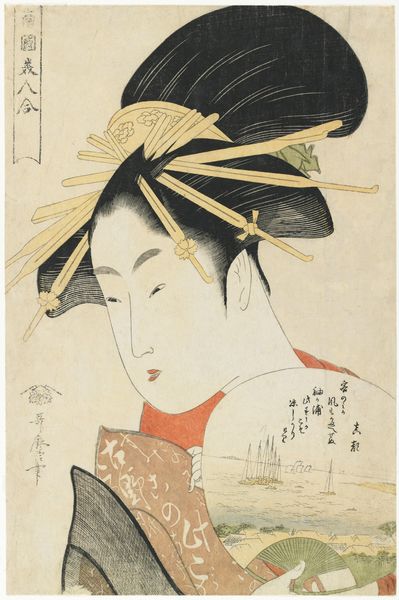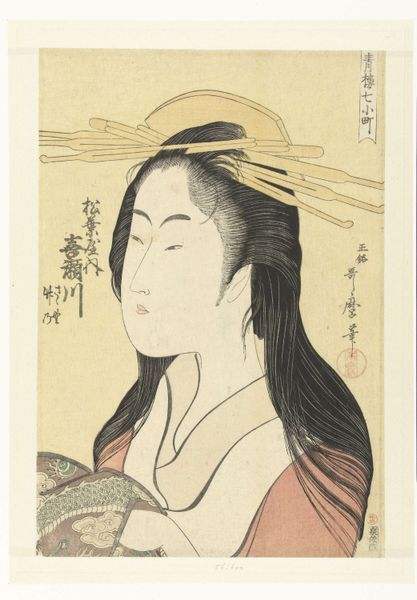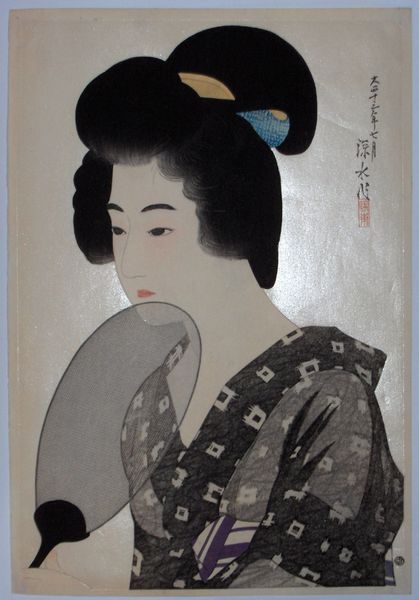
Dimensions: height 455 mm, width 292 mm
Copyright: Rijks Museum: Open Domain
Editor: So, this is "The Courtesan Umekawa in the Snow," a 1923 print by Kitano Tsunetomi. It's beautifully delicate. There’s almost a sadness to her downcast gaze. What stands out to you in this piece? Curator: It’s fascinating how this work engages with the Ukiyo-e tradition, a genre deeply rooted in representing the pleasure quarters of Edo-period Japan. Yet, Tsunetomi presents Umekawa not as a figure of exotic entertainment but as a figure immersed in nature. Notice how the falling snow—a symbol of purity and transience—clashes with the highly codified world of the courtesan. Do you think this challenges our expectations? Editor: Definitely. We usually associate Ukiyo-e with lively scenes. The snow, these subdued pastels, creates such a quiet mood. Is it making a commentary on the social standing of courtesans? Curator: Exactly. Tsunetomi might be prompting viewers to consider the lives of these women, the socio-economic forces that defined them. Remember, early 20th-century Japan saw significant shifts in its social structure and how women were perceived and represented in the public sphere. Ukiyo-e were popular visual items. By humanizing Umekawa, challenging exotic notions of courtesans as objects to purchase. Editor: So it is less a straightforward depiction and more a comment on contemporary attitudes? Curator: Precisely! It makes us consider the artist's perspective. Editor: That's really given me a lot to think about, not just about the artwork but the artist's statement about societal context of its time. Thanks for that insight. Curator: Indeed, reflecting on art within the socio-historical context adds a unique dimension to our understanding.
Comments
No comments
Be the first to comment and join the conversation on the ultimate creative platform.
